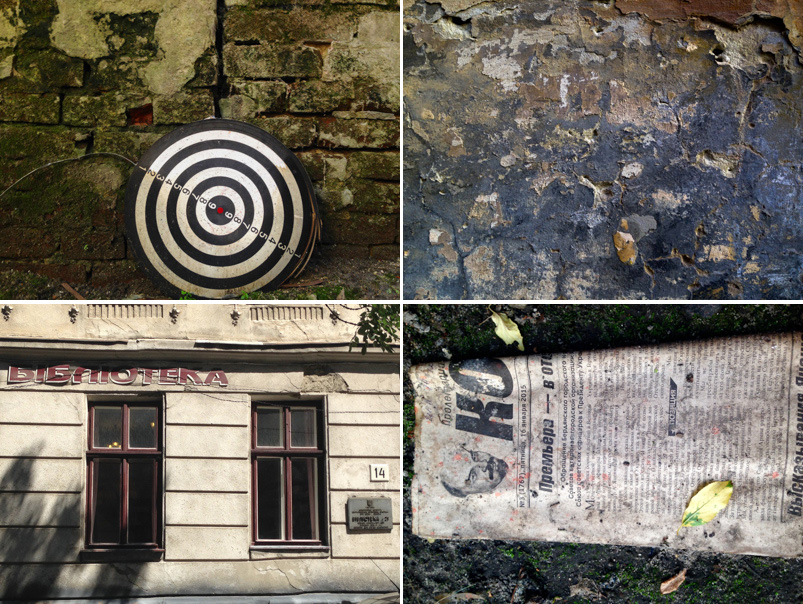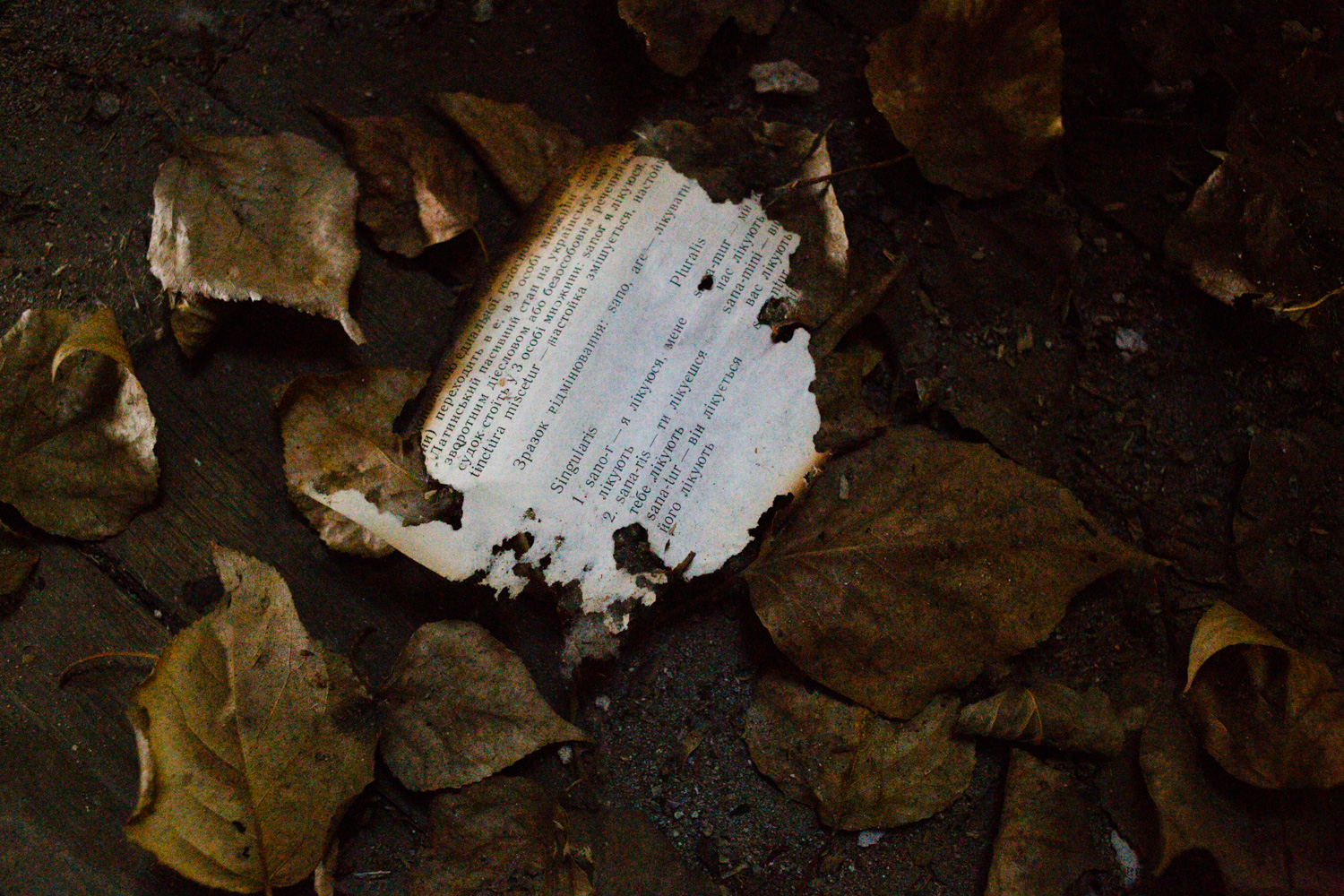It was in the Summer 2016 when I first encountered the story of the derelict building at 12 Sholem Aleichem street (formerly Bernstein street). I came to Lviv to research Debora Vogel and her literary and artistic circles of the inter-war period. Wherever I turned I seemed to hear about the building – Google, resources at the Lviv Centre for Urban History, ad-hoc chats with people at the Centre.
Off I went to find the building. The door was locked. A sign БIБЛIОТЕКА (‘library’) on the adjacent building №14 was my route in – I walked in and sneaked at the back.
 14 Bernstein street, 21 July 2016 (photos by Asya Gefter)
14 Bernstein street, 21 July 2016 (photos by Asya Gefter)
Crumbling walls separating the two buildings №14 and №12, a relatively recent (January 2015) communist newspaper with a picture of Lenin, some sort of a target shooting board, bits and pieces scattered around.
A couple weeks later Alena Andronatiy called and announced she got the keys to the building. The three of us – Alena, Olesya and myself – met. The world outside stopped to exist when we entered. I lost the sense of time. But we live in the digital age when everything is recorded. The first photograph was taken at 16:30:08, the last one at 17:27:47. It lasted less than an hour what seems a century. The building became a character in our project and film.
***
The Lviv Jewish museum was opened on 17 June 1934 in the building of the Jewish community on 12 Bernstein street. It immediately became a noticeable phenomenon in the cultural life of the multiethnic Galicia. Its collection included religious artefacts of the 17th-19th centuries (Maksymilian Goldstein Judaica collection) andmodern art.
The custodian of the museum was Ludwik Lille, artist and connoisseur of Jewish relics. He joined Artes, an avant-garde art group which tried surrealism, symbolism, abstractionism, cubism, constructivism and other movements which were in fashion in the European art of that timeheld exhibitions at the Jewish Museum and Vogel wrote about matters close to their area of interests; Henryk Streng, another member of Artes, illuminated Vogel’s prose collection Acacias Blooms well as her poetry books Day Figures and Mannequins.
In early 1940 the communist regime liquidated the Jewish Museum, and its holdings were transferred to the collections of the Industrial Museum and other museums in Lviv. Despite all the efforts of the Museum administration to save Goldstein and his family, thewere murdered during the Aktion of November 1942.
The same fate as of Debora Vogel and her family.
Ukrainian employees of the Industrial museum saved the artifacts by hiding them in the basement. In 1944 they visited Pavlo Zholtovsky, the director of the newly created Museum of Ethnography and Arts and Crafts, and presented him with the antiquities. In 1948, after the Central Committee of the Communist Party of the Soviet Union issued the resolution “On the Struggle against Rootless Cosmopolitanism,” Zholtovsky received an order to destroy all Jewish artifacts. The Ukrainian scholar, risking his freedom and life, issued to the NKVD a false certificate attesting to the destruction of the antiquities, and then hid them in the attic of the museum.
The people of Lviv discovered the twice-saved collection only in 1990, when the art historian Dr. Faina Petryakova unveiled an exhibit dedicated to the Jewish material and spiritual heritage.
‘Relics of the Jewish World of Galicia’ exhibition is currently on display at the Lviv Ethnography Museum – the very collection that was housed at the Lviv Jewish Museum in the 1930s.
The building of the former Jewish Museum survived too but has become a victim of difficult politics in the Lviv Religious Jewish community in the post-Soviet independent Ukraine.
Will be history obliterated and all memory erased yet again by the recent 2017/18 controversial renovation that might result in turning it into a hotel?
